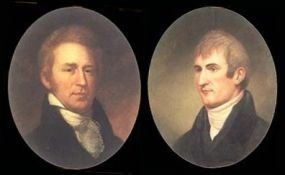
The Lewis & Clark Expedition travelled the stretch of river that is now Missouri National Recreational River from late August through early September of 1804, and again on their return trip in 1806. You can follow in their footsteps and discover for yourself the sites recorded in their journals.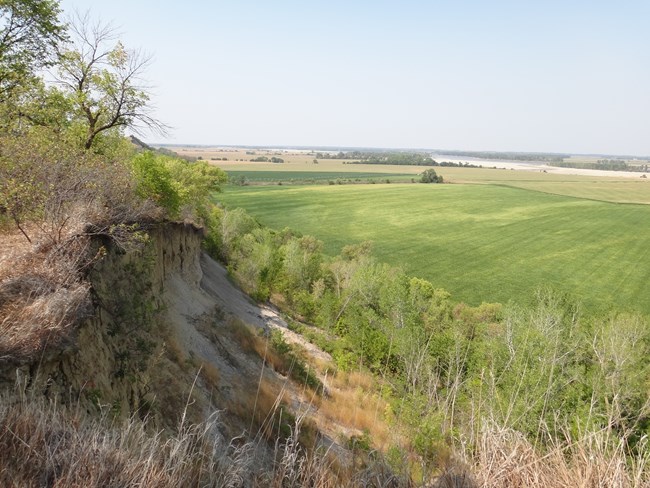
LECL NPS Photo Ionia VolcanoOn August 24, Captain Clark wrote: “we Set out at the usial time and proceeded … to the Commencement of a blue Clay Bluff of 180 or 190 feet high on the L.S. Those Bluffs appear to have been latterly on fire, and at this time is too hot for a man to bear his hand in the earth at any depth, gret appearance of Coal. 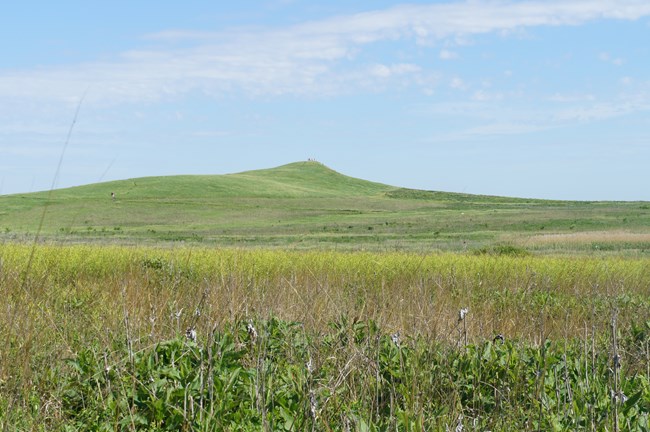
Spirit MoundOn August 25, a very hot day that Lewis described as “murky”, eleven Expedition members, plus Seaman, Lewis’ dog, hiked the eight or so miles to “. . . See the Mound which was viewed with Such turrow by all the different Nation in this quarter. . . .” Instead of seeing “evel Spirits” upon arriving at the top of the hill, they saw a plain totally flat as far as the eye could see and also “several large gangus of Buffalow & Elk feeding . . . upwards of 800 in number.” The only trees in sight were scattered along the Big Sioux, Vermillion, James, and Missouri rivers. 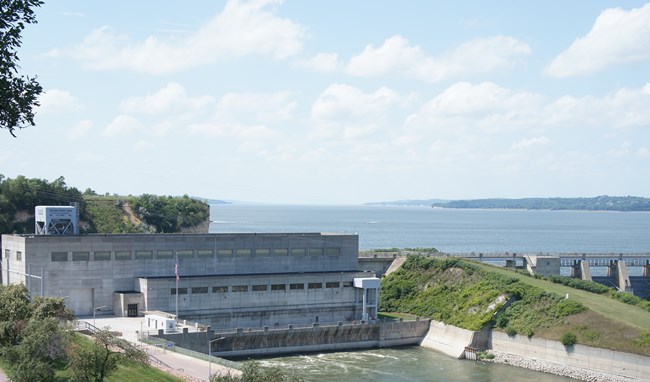
Calumet BluffFrom August 28-31, the expedition made camp below Calumet Bluff in a narrow plain on the Nebraska side of the Missouri. Here the captains held council with the Yankton Sioux. Sgt. Nathaniel Pryor, who had been sent across the river to invite the chiefs to come to council, reported on shelters “of a Conic form Covered with buffalow Roabs Painted different Colours”—tipis, the first the expedition had seen. The exact location of the camp and council site is unknown. The river changed its course an unknown number of times since 1804. And construction of the Gavins Point Dam in 1952-57 resulted in a greatly altered landscape from what the expedition members knew. The Corps of Engineers’ Lewis & Clark Visitor Center sits atop Calumet Bluff. It is on Nebraska Rt. 121 about 5 miles southwest of Yankton, South Dakota. Exhibits include a copy of the speech Lewis made to the Yankton Sioux; a transcript of the speech is available upon request. GPS: 42.849132, -97.477269 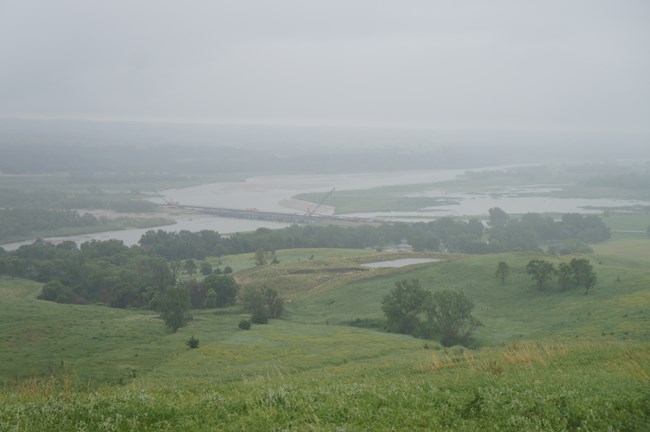
Niobrara RiverOn September 4, Capt. Clark wrote that the expedition came upon the “River Que Courre” [Rapid River, today’s Niobrara]. He explored “this river three miles to a butifull Plain on the upper Side where the Panias [Pawnees] once had a Village.” As is the case today, the river is “not navigable for even Canoos without Great difficulty owing to its Sands.” The Mormon Canal today accepts part of the water from the Niobrara and empties it into the Missouri River. Niobrara State Park offers great views of both rivers and the canal. The park is on Nebraska Rt. 12, a couple of miles west of the town of Niobrara. Niobrara State Park: 42.751393,-98.065982 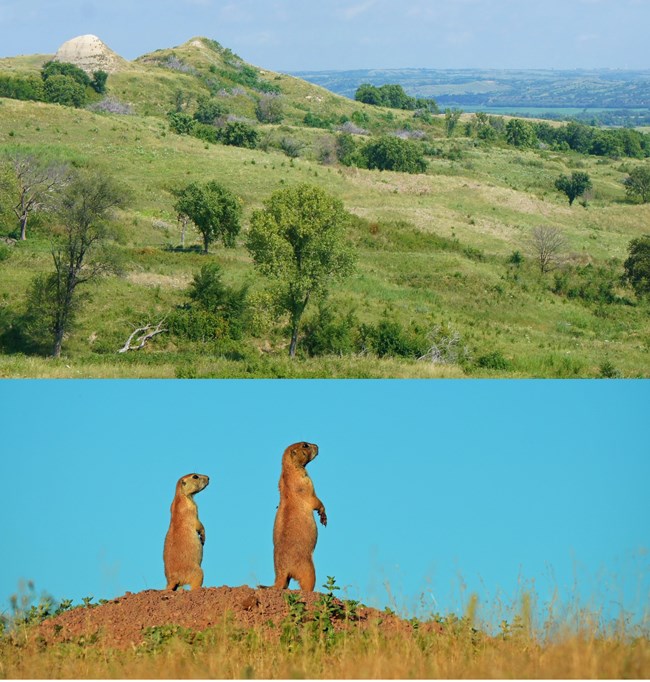
MNRR (top) and Wind Cave National Park (bottom) Old Baldy (The Tower)On September 7, Clark wrote that he and Lewis walked up “to the top which forms a Cone and is about 70 feet higher that the high lands around it … discovered a Village of Small animals that burrow in the grown (those animals are Called by the French Petit Chien).”John Ordway wrote that “they attempted to drown several out of their holes, but they caught but one, which they brought in alive. . . . Shields killed a prairie dog, which was cooked for the Capts dinner. . . . They are a curious animal.” Old Baldy is on private property and can only be viewed from a distance. Take Fourth Street north from Nebraska Rt. 12 in Lynch and drive 6.4 miles—it’s a dirt road most of the way. At a fork in the road—just past a farmstead—turn right onto another dirt road and drive for 0.8 miles. As the road turns to the right, there is a small pull-off to the left. Old Baldy is to your front at eleven o’clock. There is also a field road on the right leading to another overlook with an interpretive panel. This road is not recommended for vehicles in wet weather. GPS: 42.926389,-98.479557 |
Last updated: September 17, 2020
